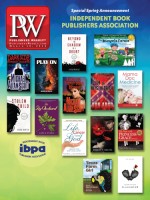More and more university presses are using video content to promote academic books and their authors, with some turning to YouTube as a marketing platform. In conversations with PW, staff members at a number of academic presses described the ways that they use video in general and YouTube specifically to support their publishing programs and help sell books.
While representatives at Columbia University Press, the University of Texas Press, and Wesleyan University Press said that they haven’t been very active on YouTube and that they use video only in a limited way, others were much more enthusiastic about the medium. Staff at Harvard University Press, Oxford University Press, and Yale University Press were quick to discuss their embrace of video—in conjunction with YouTube and social media—as were representatives at the University of Minnesota Press, which has a modest video program. All pointed to the ability of video to attract mainstream media attention—and consumers—to their titles.
When Gregory Kornbluh joined Harvard University Press five years ago as Web content manager, HUP was already producing video interviews with its authors, but he made a change. “We had a few videos on the site, but they were expensive to produce and didn’t work for academic titles,” he said. After attending a how-to panel on video marketing at a meeting of the Association of American University Presses in 2010, Kornbluh bought a video camera and revamped HUP’s video program. Working with the press’s publicity department, he now creates his own videos for HUP’s YouTube channel. Kornbluh shoots about an hour of footage for every three-minute video he produces and then edits it down. “DIY is better—we get to control the message,” he explained, emphasizing that HUP videos focus on each author’s expertise. Kornbluh cautioned against using professional videographers (“You pay extra for more edits”), saying that they tend to overemphasize “the author as a personality.”
Kornbluh posted his first video to the HUP YouTube channel in 2011, and today it features about 63 videos. He consults with HUP publicists and editors on which authors to shoot—he generally focuses on trade-oriented titles (“If the author is a snooze, no one watches”)—and does three to six video shoots per season. He is convinced of the importance of video for the press, explaining that video is easy to share on the Web and is “bait for larger broadcast media,” which, he said, can directly produce book sales. “Video makes people stick around on your blogs and on Facebook,” Kornbluh added. YouTube, he noted, is the best place “for people to discover video on their own.” Kornbluh said that HUP author videos each attract about 1,500–2,500 views, though some authors, like mathematician Paul Lockhart, author of Measurement, a book that offers elegant solutions to complex math problems, has racked up more than 23,000 views.
Yale University Press has two YouTube channels, said publicity director Brenda King—one for its New Haven office, with 33 videos, and another for YUP London, with 21 videos. But Oxford University Press’s program is much bigger than Harvard and Yale’s programs. At HUP, Kornbluh works with two people—a Web developer and publicist—to produce the videos. But Alice Northover, OUP social media manager, oversees a marketing staff of more than 40 people who work on video production (among other things)—shooting and editing videos themselves, or working with freelancers to produce videos. OUP has multiple YouTube channels (as well as a Vimeo channel for professionally shot videos).
OUP’s professional shoots are usually for online products and certain instructional videos, while author interviews are generally done by in-house marketing and publicity staff at a ministudio in New York City. The Oxford Academic YouTube channel, which focuses on academic publishing and hosts more than 850 videos, also has videos about nonbook online reference products, as well as tutorial videos for subjects like chemistry and videos that are for OUP staff only—e.g., those in which editors explain books and journals for publicists.
The marketing staff decides which authors are to be featured, Northover said. “We tend to film more trade authors than academic authors,” she noted. Video is used “for a variety of things depending on the audience you’re trying to reach.” Video footage, she said, generally ends up on the product pages of online retailers and on YouTube, as well as on blogs, Twitter, Facebook, and other social media. Like Harvard, OUP uses video to “pitch authors to TV and other media,” Northover said. And while she acknowledged that there’s “no direct evidence” that video helps to sell books, she emphasized that “it’s about search engine optimization,” noting, “when people search online, video brings consumers to our books.”
The University of Minnesota Press has a more measured effort, with about 20 videos (including animated slide shows of its photo books) on its YouTube channel. UMP does about two videos a year, said Maggie Sattler, direct-marketing coordinator at UMP. “They’re valuable as permanent content and marketing tools.” The house specializes in books on music (often jazz), music criticism, curated photography books, and cookbooks. UMP uses professional videographers and in-house staff to produce its videos, according to Sattler, who also edits video using iMovie and produces animated videos of UMP photo books via Animoto.
“We started using video four or five years ago as an experiment,” Sattler said. “We’ve got a lot of views on some,” she noted, pointing to a video for Rifftide, a book about the late, great jazz drummer Papa Joe Jones, with 10,000 views, and a video for Out of the Vinyl Deeps, a collection of music criticism by Ellen Willis, the late Village Voice and New Yorker writer, with 3,600 views. “When we have the opportunity to use video to promote our music or visual books, we go for it,” she said.



 Volume 261
Issue 10
03/10/2014
Volume 261
Issue 10
03/10/2014





